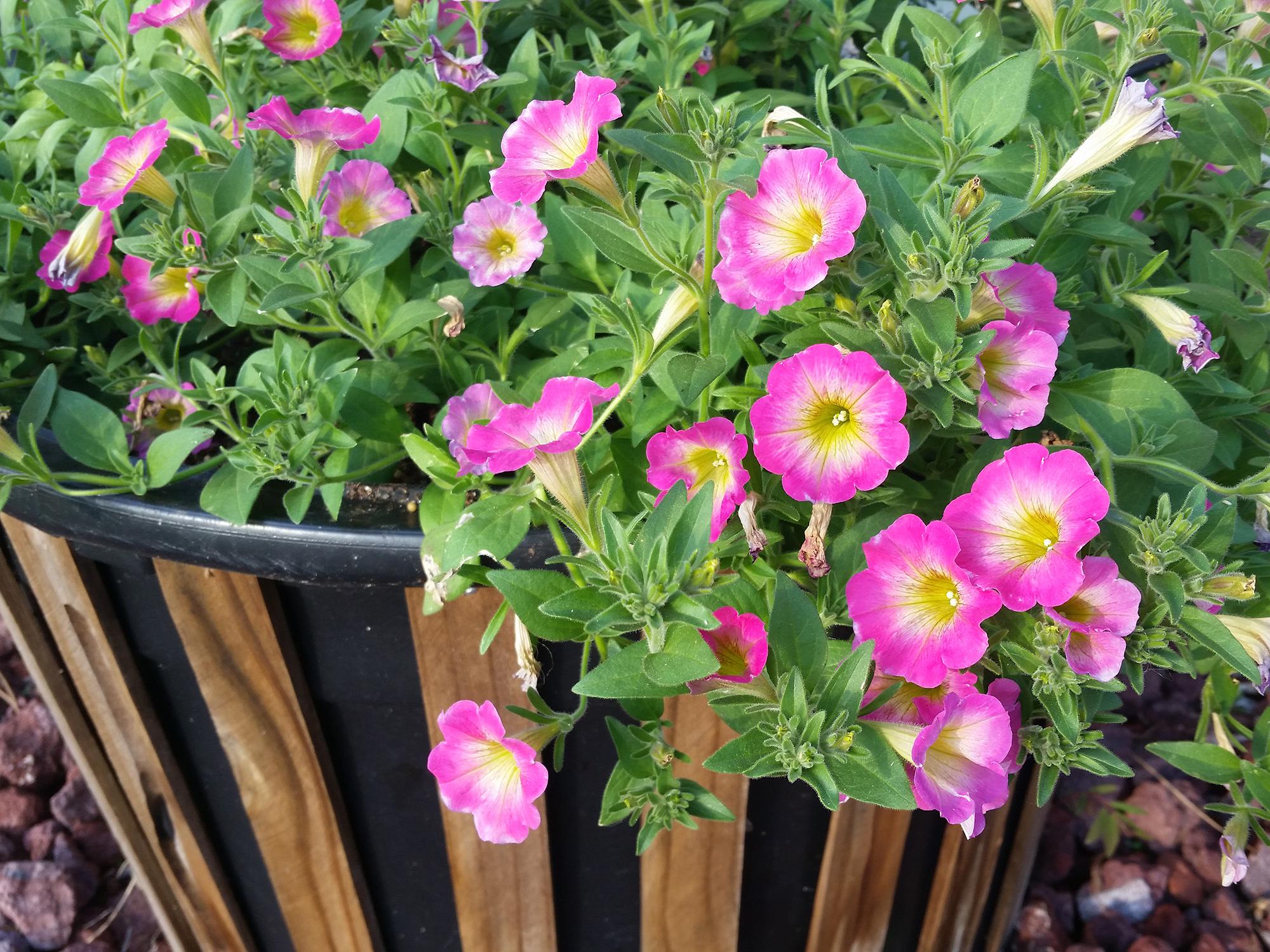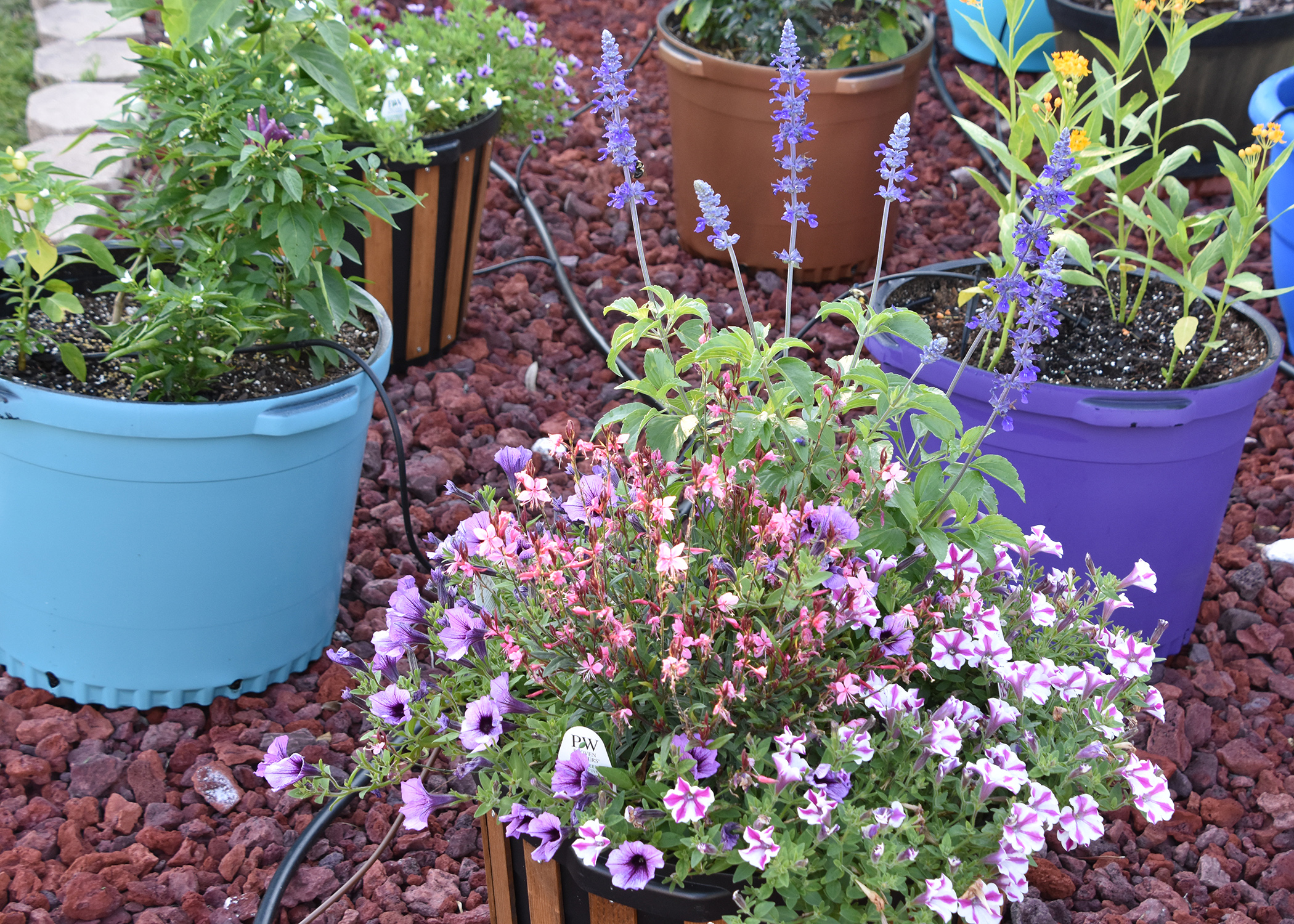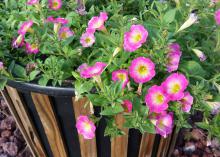Information Possibly Outdated
The information presented on this page was originally released on August 28, 2017. It may not be outdated, but please search our site for more current information. If you plan to quote or reference this information in a publication, please check with the Extension specialist or author before proceeding.
Container gardening solves several landscape problems
This year has been a challenge in my home landscape and garden.
First, we have had a lot of rain: more than 93 inches and counting collected in our Community Collaborative Rain, Hail & Snow Network rain gauge. If you’re interested in being a volunteer rain reporter for them, go to http://www.cocoraahs.org for more information. I’ve seen so many waterlogged landscape beds and lawns that just won’t dry out.
The second big challenge was the heat. When it’s not raining, the high temperatures and humidity have maintained heat indexes that make me -- and many others gardeners -- just stay indoors. Surely that yard work can be put off until October.
But I’ve taken the steps to make my gardening an easier chore.
Besides the few foundation Indian hawthorns I have in my front landscape, I grow everything else in containers. I grow in self-watering container garden systems, along with 3-gallon, 5-gallon, 15-gallon and 25-gallon black nursery containers. Growing in containers alleviates the waterlogging problem and makes gardening in 113-degree heat index temperatures almost tolerable. I did say almost.
Here are my top thoughts for being a successful container gardener.
The biggest issue may be choosing just the right container. There are many to choose from. I like to use black nursery containers. To create interest, I paint some and add vertical wood slats to others.
Containers need consistent irrigation, as the plants rely on you for their water needs. There are great pots and containers with water reservoirs that can extend the period between waterings. I’ve adapted my preexisting irrigation system for container growing, and this has been a great time saver. You can buy starter irrigation kits with fittings, tubing and timers that attach right to the water spigot.
Next, always use container potting mix. This product is found under a variety of trade names, which can be confusing. Read the ingredients to make sure you buy the right mix. The proper container mixes have components such as peat moss, coir fiber or bark. Vermiculite and perlite are added to lighten the mix.
All potting mixes provide the four basic requirements of plant roots: air space, water-holding capacity, initial fertilization and root support. Commercial bagged container mixes have been engineered for optimum drainage, which is another important factor to consider.
Keeping your container-grown plant well fed is a key to success. The easiest way to feed them is to use a water-soluble fertilizer. I like to the use a fertilizer attachment that fits on the hose, as there’s no measuring required.
My last tip concerns plant selection. While it’s possible to grow any plant in any container, you need to choose the right plant for the right container. Doesn’t that sound like the old landscape adage, “plant the right tree in the right place”? Every year, there are more and more dwarf and patio-sized plants available that have been bred for container growing. This makes it easy to find a suitable plant for your containers.
Growing in containers makes it easy to move your garden around or to provide weather protection for your prized plants. And have I mentioned that there isn’t nearly as much weeding to do in containers?
Once you make the transition to container gardening, I know you’ll be looking for more pots.






